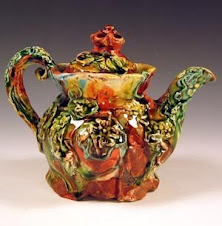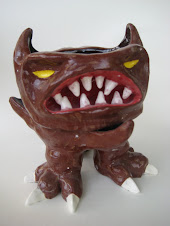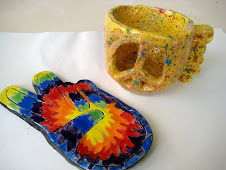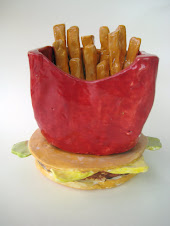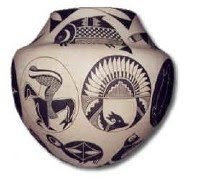Miss Patterson
Beginning Ceramics
Clay is an ancient medium that began as a means to create functional objects used in everyday life, and has evolved to become one of the most beautiful forms of artistic expression. In this class, you will have the opportunity to explore your creativity through the form and function of ceramics. I encourage you to take risks and develop your personal style throughout the semester.
In this class, we will study the beginning techniques of pinching, coiling and slab building. We will also practice beginning skills on the wheel. In addition to the class work, you will have weekly assignments reinforcing the techniques we are studying.
For this class you will need:
a shoebox to store clay and projects in (I have some used ones, or you can get your own)
a notebook to record outside assignments and sketch project ideas (lined, blank, leftover from Foundations…)
three plastic bags to wrap clay in--small trash bags and gallon-sized Ziploc bags work well
soap, hand lotion or tissues to contribute to the classroom
These items are due next class!
Grading
Your projects will be graded by the execution of the technique studied, the glaze or finish, and your written feedback on the grading sheet. You are responsible for any assignments written on the board, so check it daily!Your overall grade will be a combination of your projects, outside assignments, and effort.
Cleanup
Keeping this room clean is a matter of safety. Each artist is responsible for their own workspace as well as a weekly studio job, which will help with the general maintenance of the studio space. Completion of your cleanup jobs will factor into your effort grade.
Expectations
*You will show up on time and remain in class until the bell rings. If you need to leave, tell me. Lining up at the door before the bell shows me that you have extra time to do more cleaning!
*You will work on projects throughout the class, and clean up well every day. Your effort grade is heavily based upon everyday work habits, so make them good. No non-enrolled students are allowed in the room during class time.
*No food or drink in the room. It is unhealthy to eat in this room due to the nature of the materials we use, and this also avoids messes in the workspace.
*No Ipods or cell phones during class. This is a school rule as well as my own rule—these devices are distracting and antisocial, making it difficult for me to teach and for you to learn.
*Respect the kilns! They are almost always running, and they get very hot. Please be careful when bringing work into the kiln room
*Respect each other. Remember the Golden Rule? Your language and attitude create the atmosphere in our classroom, and make it a comfortable place to be. If you can speak in a respectful way and manage your time well while you are in this class, you will do well this semester.








